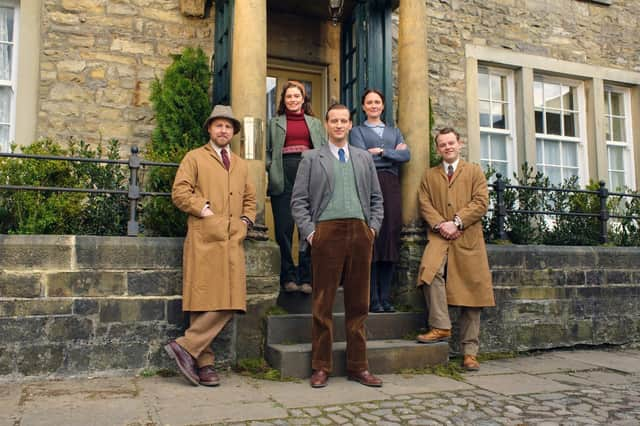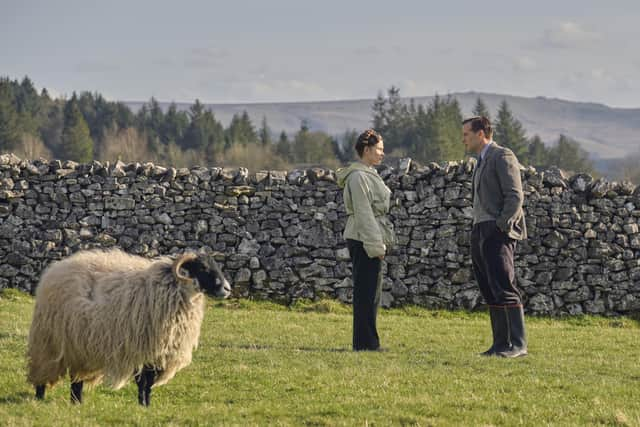From Hadleigh to Herriot: How TV showed Yorkshire to the world – David Behrens


The interest was partly the result of the endless trailers and press coverage – only Dominic Raab generated more column inches – but there was more to it than that. On some level it filled a need to be taken out of ourselves, even if just for 50 minutes minus the commercials.
Undemanding entertainment such as this is the televisual equivalent of shepherd’s pie – comfort food for the soul which distracts the eye from what’s going on outside the window. It’s the very opposite of reality programming.
Advertisement
Hide AdAdvertisement
Hide AdThe show is set before the war but its popularity has more to do with nostalgia for the 1970s, when as a nation we sat down on Saturday nights to watch the first TV iteration of Herriot’s stories, with Christopher Timothy and Robert Hardy. The evocative theme music connects those of us of a certain age with a simpler time, when TV in all its three-channel glory was an escape from the power cuts and privations of daily life.


That the series was set in Yorkshire added to its charm, for the rural landscape betrayed an England that had already been lost to a generation of viewers in their city tenements and high rises. It still does.
Heartbeat, which did for coppers on bikes what All Creatures did for vets, ploughed a similar furrow, setting itself in the 1960s, a decade which when the series began was still comfortably within the popular memory.
Advertisement
Hide AdAdvertisement
Hide AdBut earlier dramas had already begun to exploit Yorkshire as a setting, and today you don’t need to scroll far beyond Channel 5 on the Freeview listings to see a rather different picture of life here in the 1970s.
The county then had only just been placed on the TV map, and the drama producers parachuted in from London were keen to see their new home represented on screen – but the Yorkshire they envisioned was a land of grim-faced, tough-talking professionals who said what they meant and brooked no nonsense from anyone who disagreed. It was no more accurate a depiction than cloth caps and clay pipes, but it sat well with the theatrical mores of the time.
Into this arena strode James Hadleigh and David Main, Yorkshire’s first leading TV characters – and both played by Londoners. Hadleigh, the central figure in the eponymous, long-running series, was a wealthy landowner who drove his Aston Martin around the North Riding and put to right social injustice wherever he found it. In a less cynical age, viewers accepted this as the normal behaviour of a country squire, and the series became a staple of Friday night viewing. Its leading man, the suave Gerald Harper, was a poster boy for the Man at C&A generation.
David Main, meanwhile, was an impossibly high-powered solicitor with offices – and bedrooms – in Leeds and London, who thought nothing of dashing between them several times per episode. It was about as glamorous as British TV got in those days. The Main Chance, with the late John Stride as its star, had been all but forgotten until it turned up recently on the speciality channel, Talking Pictures TV.
Advertisement
Hide AdAdvertisement
Hide AdThis week’s episode, from 1970, was a particular eye-opener, as Main set out to expose corruption in a fictionalised Leeds City Hall, where councillors were conniving with a John Poulson-like architect to put up another quick-build block of high-rise flats. In a city whose real landscape was pockmarked with such aberrations, and where Poulson was shortly to go on trial for corruption, it was closer to home than most viewers could have known.
Plots like that were the by-products of works by Stan Barstow, John Braine and other pioneers whose realistic take on the industrial Yorkshire they knew helped kick-start the kitchen sink movement of the 1960s. Until All Creatures came along, they were the standard portrayal of our region on the screen.
So why do they now seem clichéd – risible even – when comforting fare about vets rolling up their sleeves before inserting their arms into the rear end of a farm animal are prime time viewing? That, as Channel 5 has discovered, is the power of nostalgia to separate the parts of life we want to remember from those we would rather forget. If only politics were like that.
Advertisement
Hide AdAdvertisement
Hide AdSupport The Yorkshire Post and become a subscriber today. Your subscription will help us to continue to bring quality news to the people of Yorkshire. In return, you’ll see fewer ads on site, get free access to our app and receive exclusive members-only offers. Click here to subscribe.
Comment Guidelines
National World encourages reader discussion on our stories. User feedback, insights and back-and-forth exchanges add a rich layer of context to reporting. Please review our Community Guidelines before commenting.